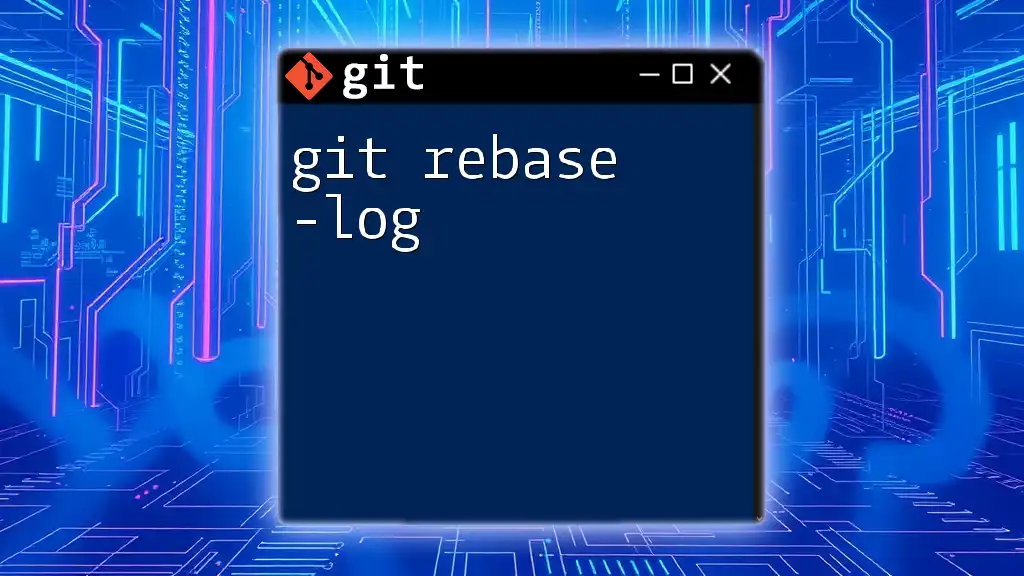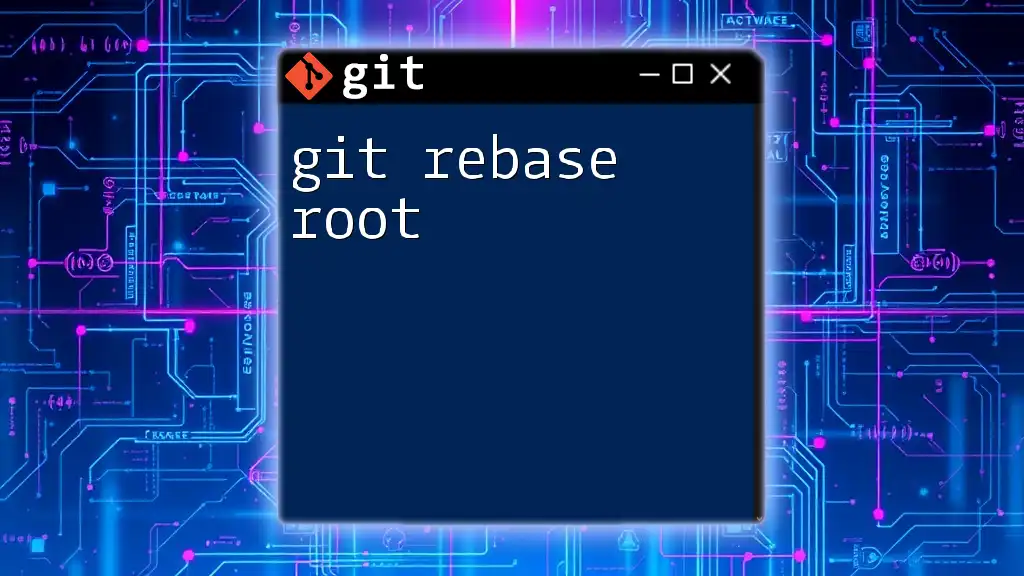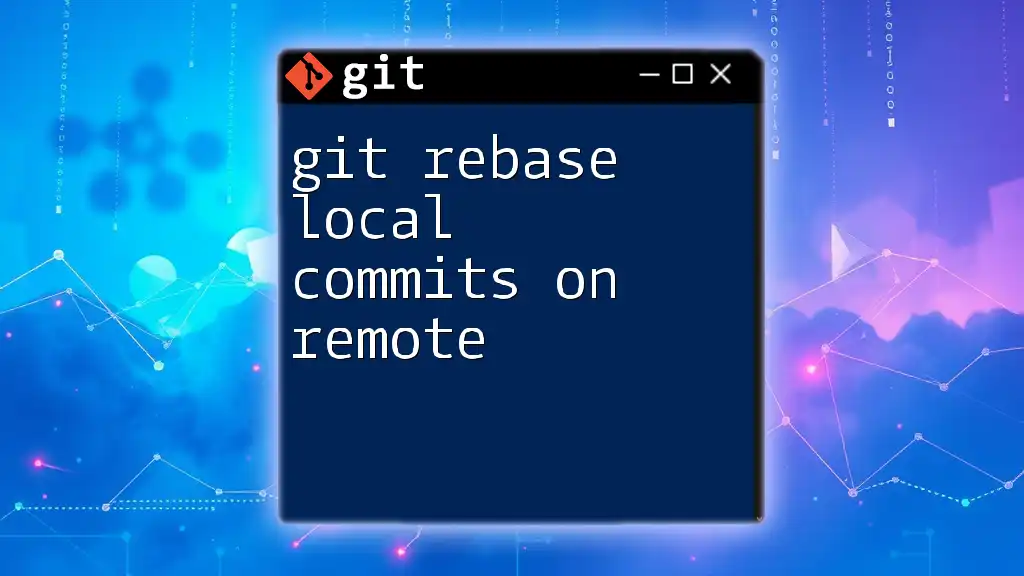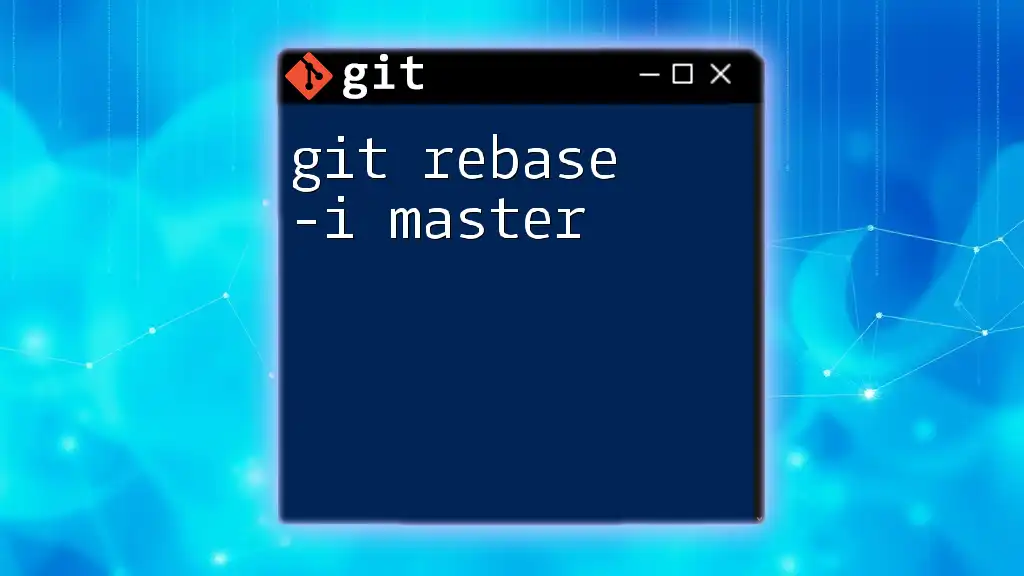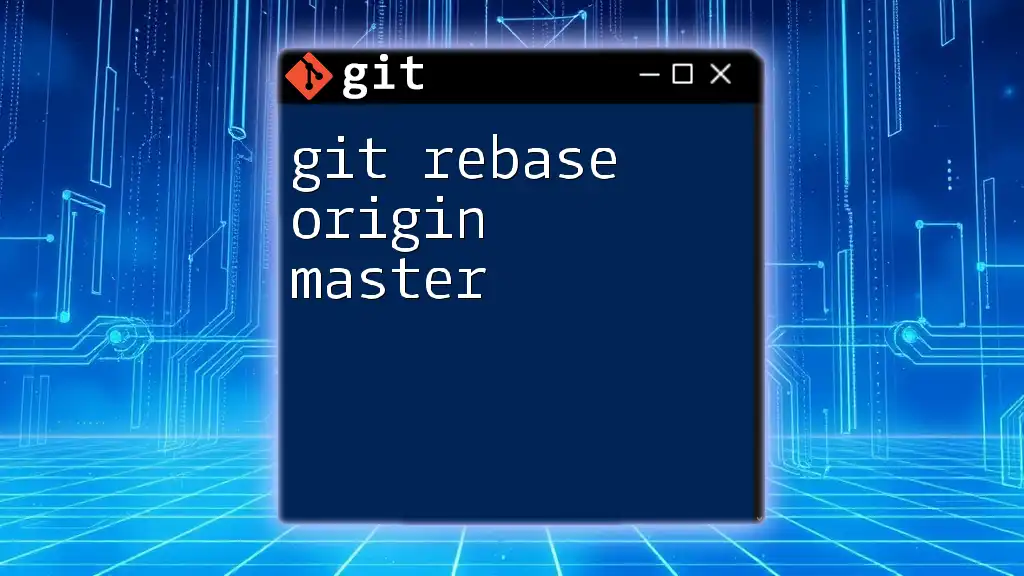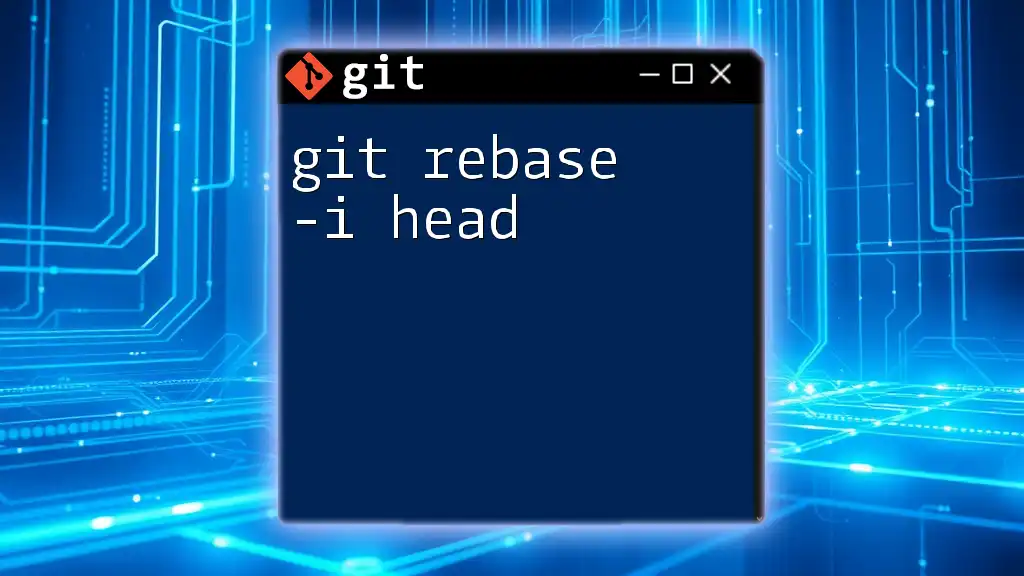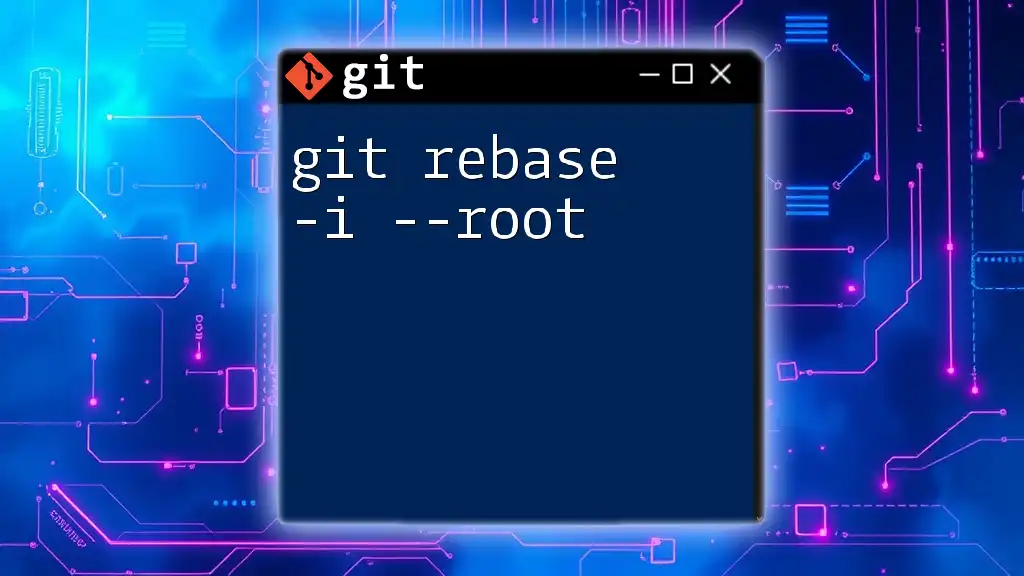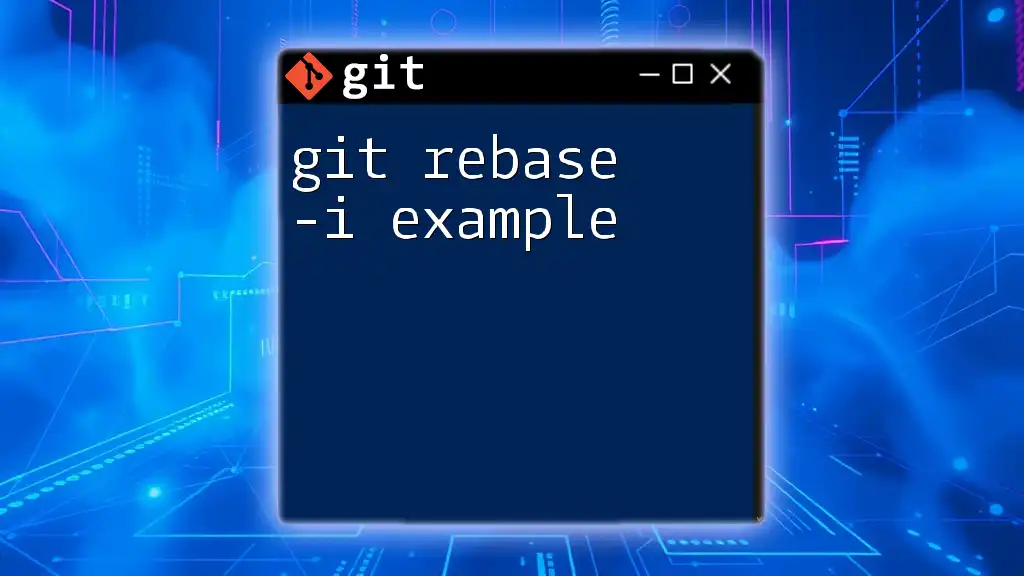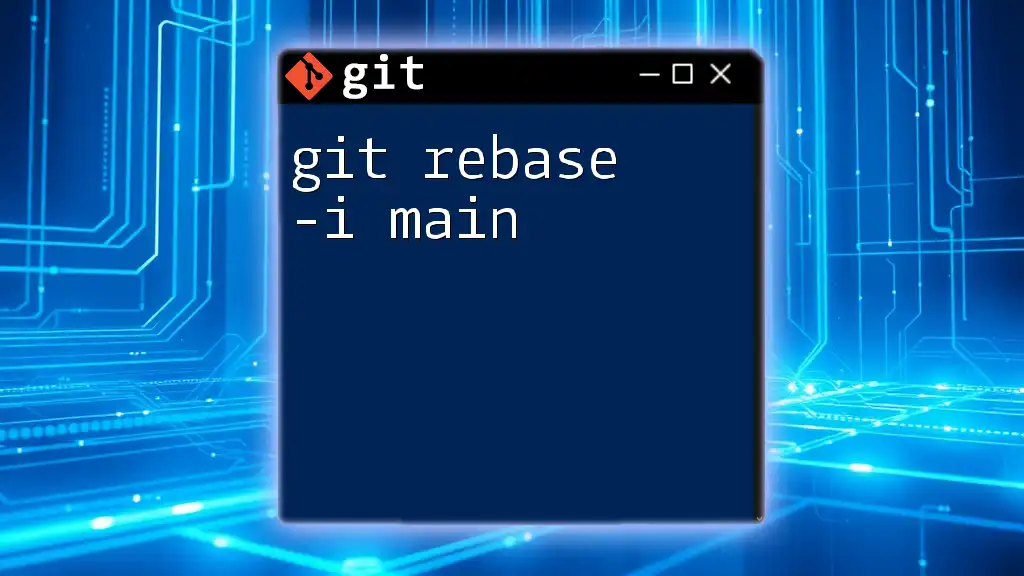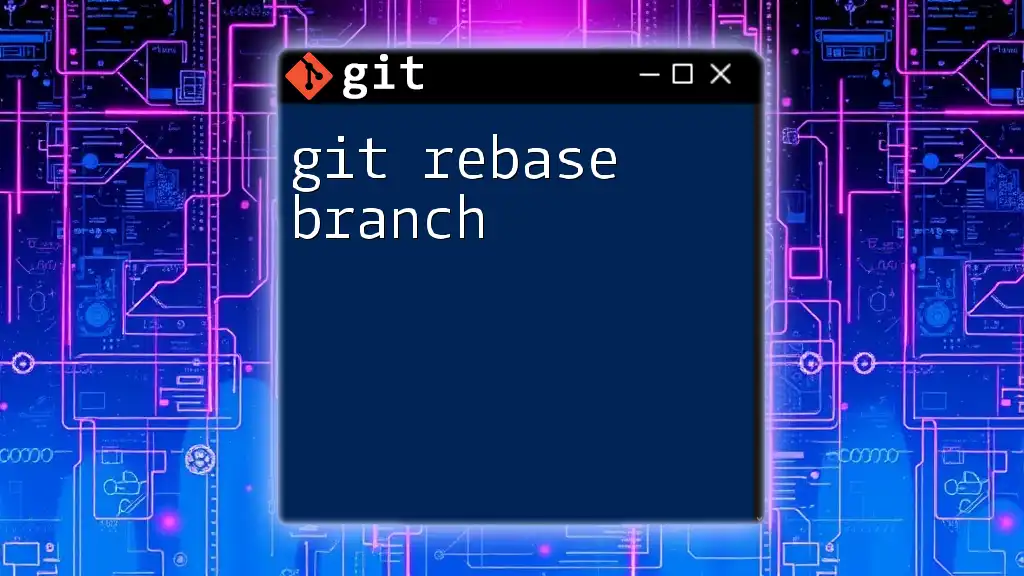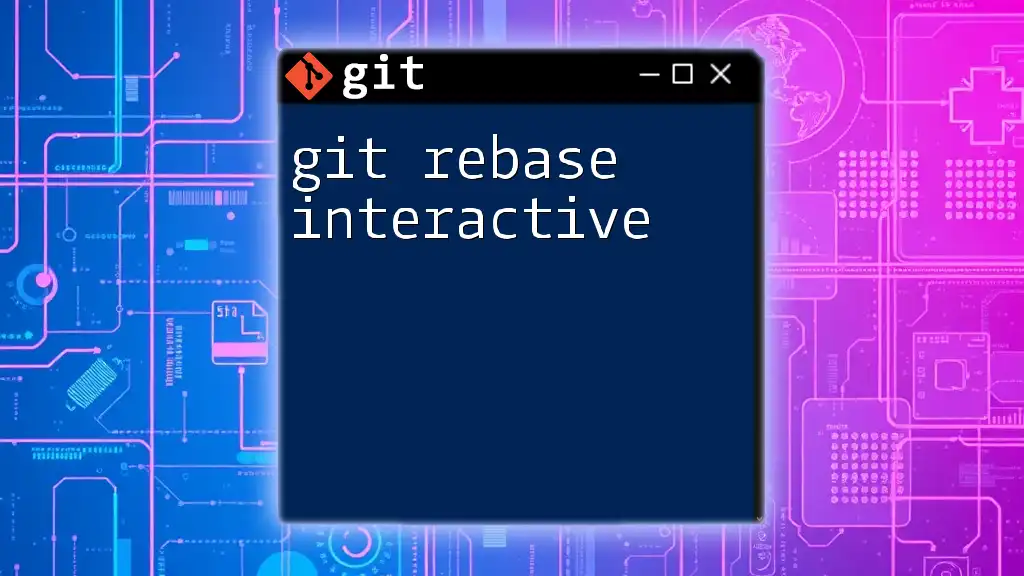The `git rebase --log` command allows you to rebase your current branch onto another branch while preserving a log of commits that have been applied during the rebase.
Here's the command in markdown format:
git rebase --log <upstream>
The Basics of Rebase
Understanding the Rebase Workflow
Rebasing is an essential Git operation that allows developers to integrate changes from one branch into another. Unlike merging, which creates a new commit to combine histories, rebasing moves or reapplies commits in a linear manner. This results in a cleaner project history, which is particularly beneficial for continuous integration scenarios.
When you initiate a rebase, Git changes the parent commit of the current branch to the commit at the tip of the specified upstream branch. This allows you to keep a straightforward and linear commit history.
Common Use Cases for Rebase
Rebase can significantly enhance your workflow, especially in the following scenarios:
- Feature Branch Integration: If multiple developers are working on the same repository, you might often want to update your feature branch with the latest changes from the main branch to minimize merge conflicts.
- Cleaning Up Commit History: Before merging a feature branch into the main branch, you may want to tidy up your commit history by eliminating unnecessary commits or combining related changes.
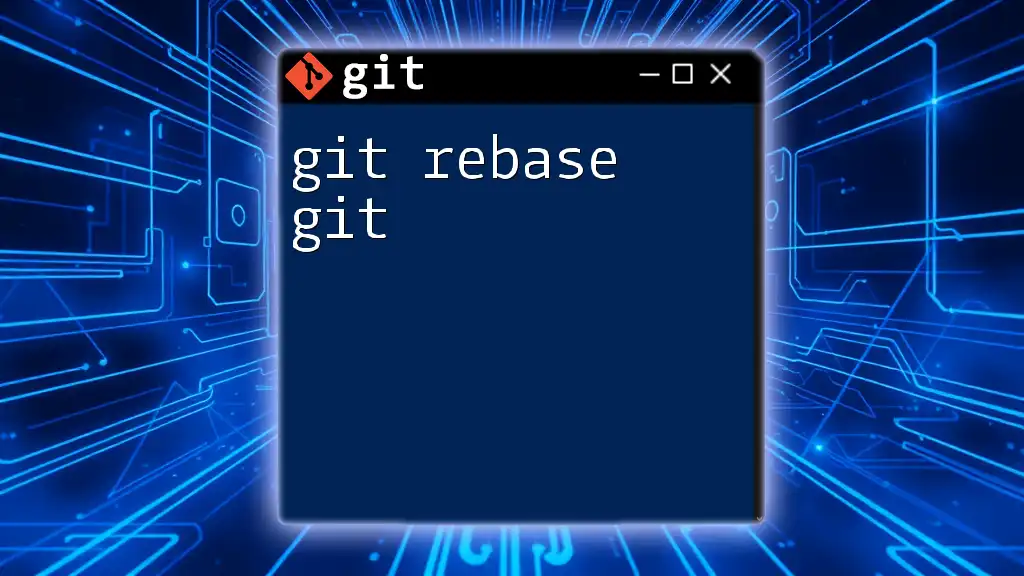
Understanding `git rebase -log`
What does `git rebase -log` do?
The `-log` option enhances the rebase experience by providing a detailed log of commits being reapplied. This helps you understand what is happening during the rebase process and assists in code review, offering context for the changes being integrated.
How to Use `git rebase -log`
Basic Syntax
The basic syntax for using `git rebase -log` is as follows:
git rebase -log <upstream>
Example Usage
Imagine your feature branch is behind the main branch. You want to bring it up-to-date without cluttering your commit history. Here’s how you can do this with `git rebase -log`:
- First, ensure you have fetched the latest changes from the remote repository:
git fetch origin - Then, checkout your feature branch:
git checkout feature-branch - Finally, run the rebase command:
git rebase -log origin/main
During this process, Git will apply commits from your feature branch onto the latest commit from `origin/main`, and the `-log` option will show each commit being reapplied along with its commit message.
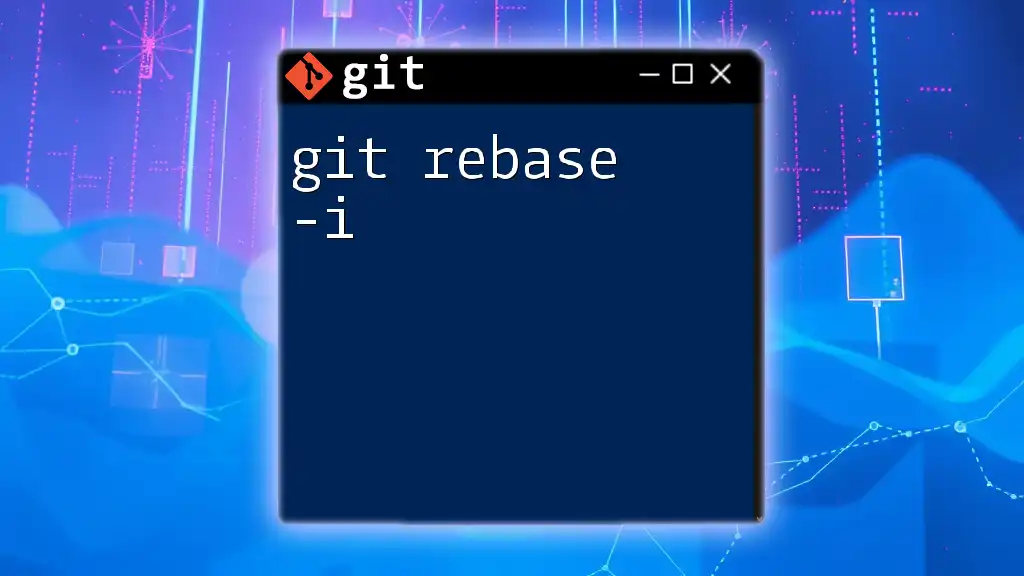
The Benefits of Using `-log`
Clarity in Commit History
One of the most significant advantages of using `git rebase -log` is the clarity it brings to your commit history. When you execute a rebase with the `-log` option, Git prints out the commit messages for each commit being processed. This clarity allows developers to quickly identify what changes are being applied, which can facilitate smoother reviews and enhance collaboration among team members.
Facilitating Collaboration
In a multi-developer environment, understanding changes added by others can become cumbersome. By using `git rebase -log`, not only do you streamline your own project history, but you also help your colleagues stay informed about changes, reducing confusion during code integrations.
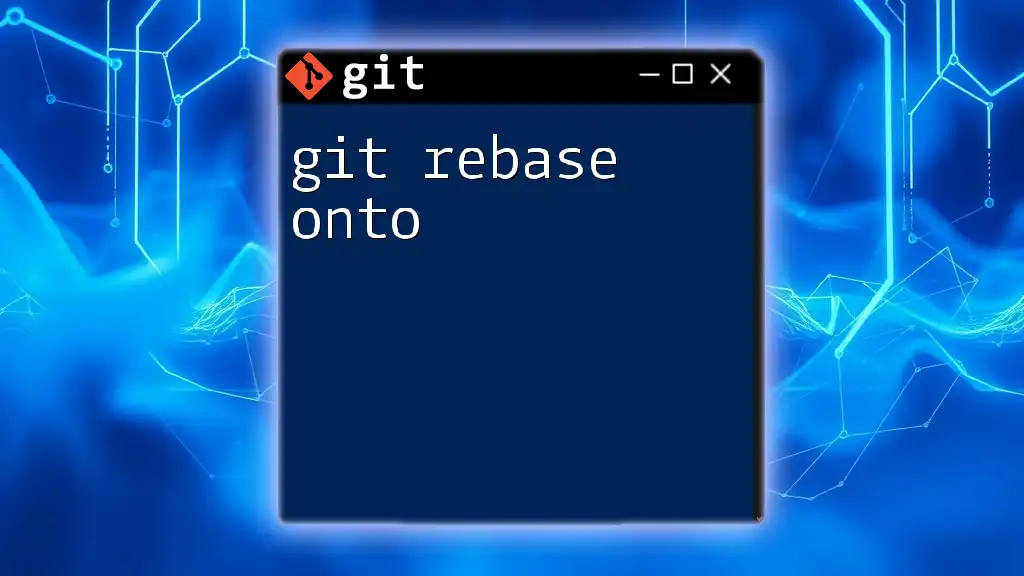
Handling Conflicts during Rebase
Understanding Conflicts
Conflicts occur when two branches have made changes to the same line of code, or when one branch has deleted a file that the other branch has modified. When you run `git rebase`, Git attempts to apply each commit from your feature branch on top of the other branch. If it encounters a conflict, it will pause and prompt you to resolve it.
Resolving Conflicts with `git rebase -log`
Here's how you can efficiently handle conflicts while using `git rebase -log`:
- When a conflict arises, Git will pause the rebase process and give you messages regarding the conflicting files.
- Check the status to see which files are conflicting:
git status - Open the conflicting files, resolve the conflicts, and then add the changes:
git add <conflicted-file> - After resolving all conflicts, continue the rebase:
git rebase --continue
o keep track of your progress, Git will continue to display the logs of the commits it is processing thanks to the `-log` option.
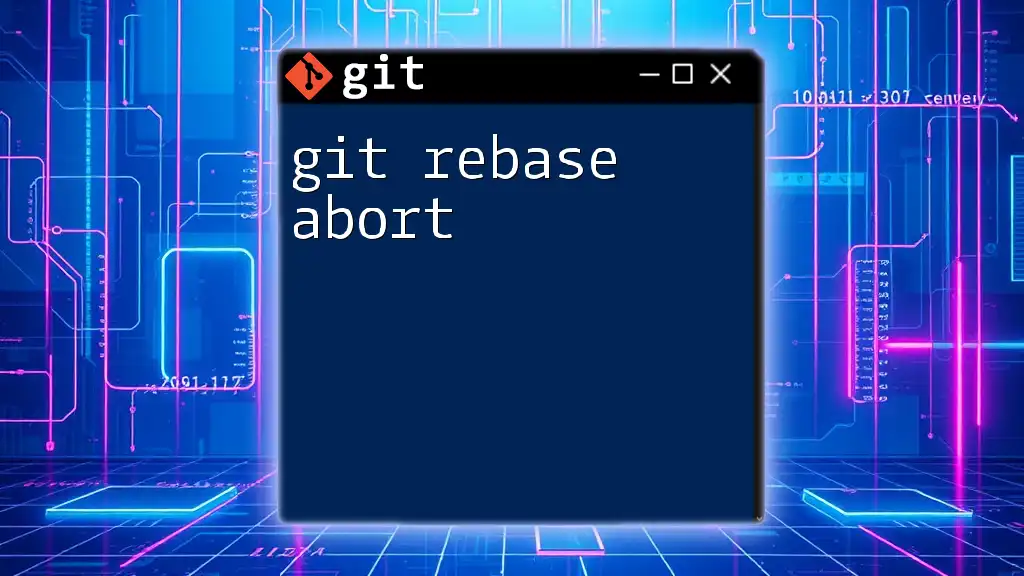
Advanced Rebase Techniques
Interactive Rebasing
Interactive rebasing takes the concept of rebasing further by allowing developers to modify commit history on the fly. You can choose to squash commits, edit messages, or even reorder them. The `-log` option works seamlessly during interactive rebasing too, providing context for each commit being modified.
Example of Interactive Rebase with `-log`
To engage in an interactive rebase, run the following command, specifying how many past commits you want to work with:
git rebase -i -log HEAD~3
This command opens an editor where you can select options for each commit, such as editing or squashing commits. The `-log` option will provide you with each selected commit message, allowing for informed decisions about the changes you want to apply.
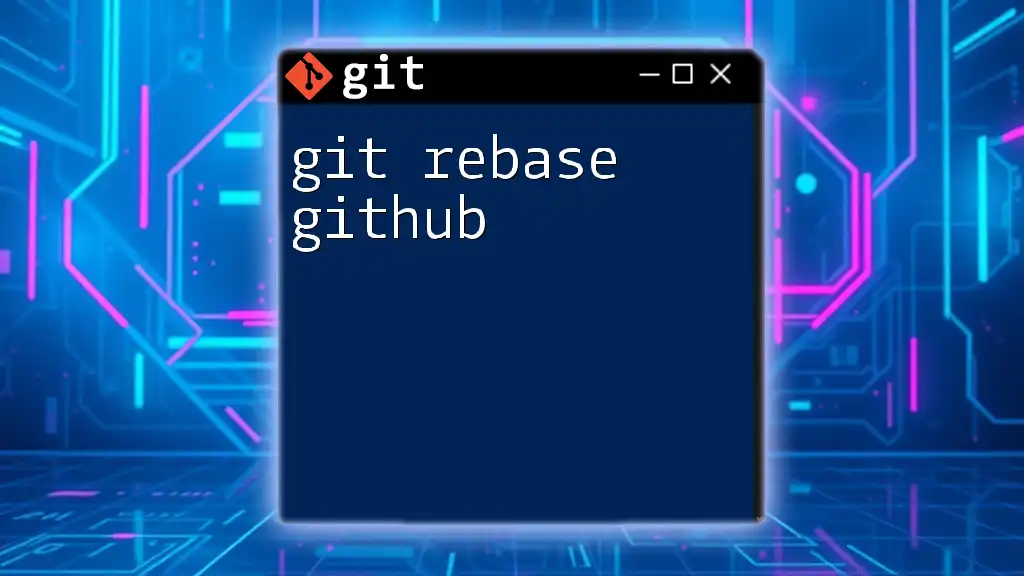
Best Practices for Using Rebase
When to Use Rebase vs Merge
While both rebase and merge serve similar purposes, they have distinct use cases. Rebase is best utilized for integrating changes while maintaining a clean and linear commit history. Use merge when you want to preserve the entire branch structure and changes made across branches, which may be useful for feature or release branches.
Maintaining a Clean Commit History
To ensure your project’s commit history remains organized and easy to navigate, consider the following best practices:
- Always rebase before starting work on a feature branch to ensure you're operating on the latest base.
- Use descriptive commit messages to make it easier for others to understand your changes.
- Use `git rebase -log` to visualize your commit history and ensure clarity.
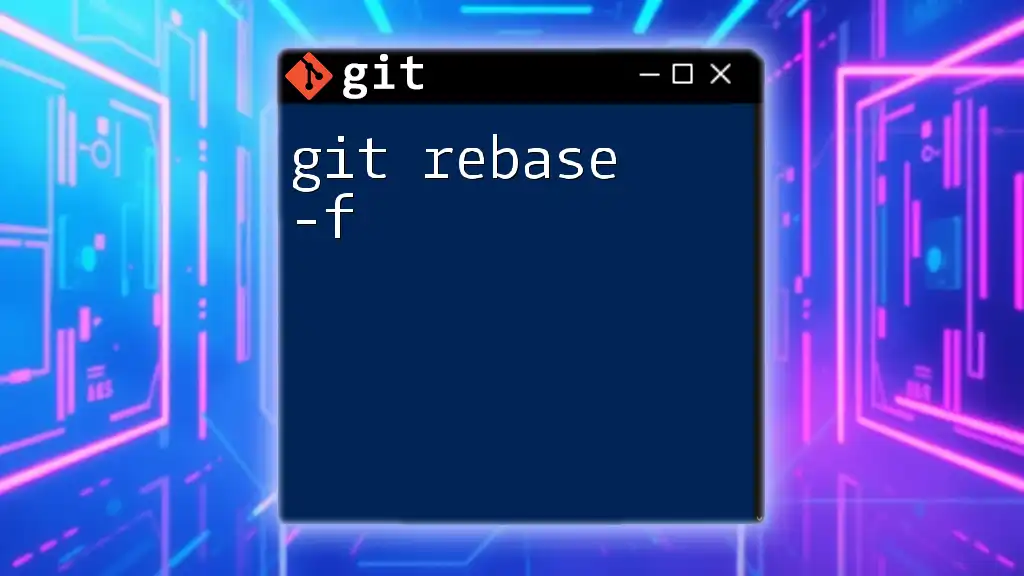
Conclusion
In summary, mastering `git rebase -log` is an invaluable skill for every developer who aims to maintain an efficient and clean commit history. By utilizing this powerful feature, you not only streamline your collaboration with teammates but also enhance the clarity of your codebase changes. Don’t hesitate to explore more about Git’s capabilities, and practice applying `git rebase -log` to fully harness its potential!
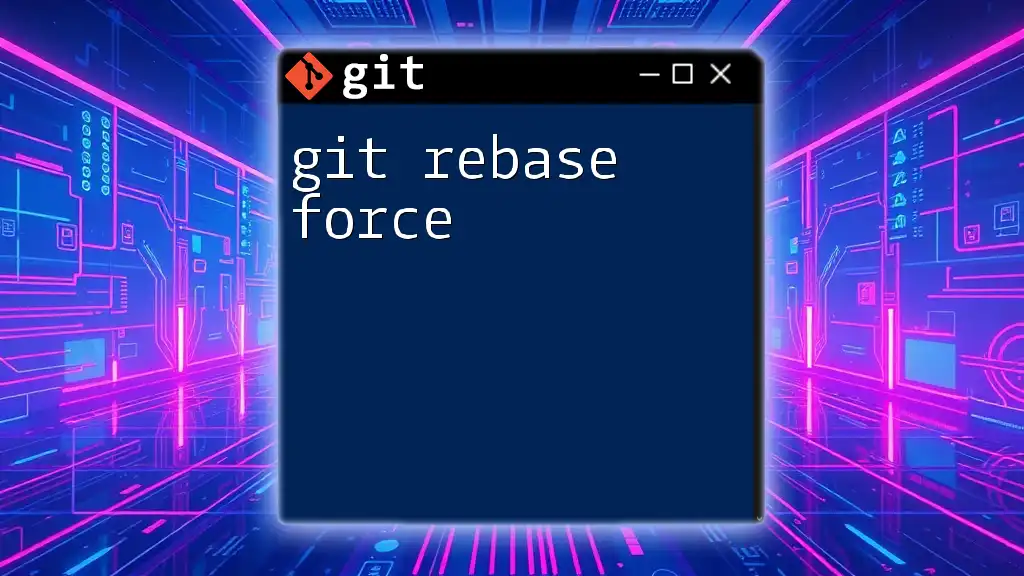
Call to Action
Now that you’ve grasped the fundamentals and advantages of using `git rebase -log`, it’s time to put your knowledge into practice! Experiment with your own branches and observe how the rebase process works. If you have any thoughts or questions regarding your rebase experiences, feel free to share them in the comments section below!

